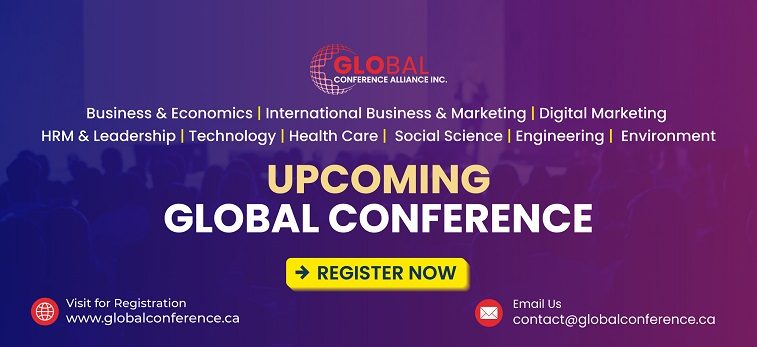A successful conference does not happen by chance. Behind every well-run event is a set of clear and meaningful goals that keep everything on track. These goals, known as conference objectives, shape the sessions, guide the speakers, and help the audience understand the purpose. Many organizers often wonder how to write conference objectives that truly make an event effective and easy to plan.
To write conference objectives, start by knowing the main purpose of your event. Keep your objectives short, clear, and action-focused. Use words like “learn” or “build” to show real outcomes. Make sure they match your audience’s needs, stay specific, and are easy to achieve within the event time.
Would you like to know more about this topic? If so, continue reading because this article will teach you everything you need to know about writing effective conference objectives in a clear, step-by-step manner.
How to Write Conference Objectives?
Writing clear conference objectives helps everyone know the event’s purpose. It sets the plan for what the event wants to achieve. Good objectives guide speakers, organizers, and guests in the same direction. Let’s look at how to write them step by step so you can plan better.
Step 1. Know the Purpose
Before writing, think about why the conference exists. What do you want people to learn or do? Write down one clear main purpose. This will help you stay focused and plan better sessions. When your goal is clear, the rest of your writing becomes simple and useful.
Step 2. Keep It Short and Clear
Good objectives are short, simple, and easy to read. Avoid long sentences or complex words. Each line should tell what the conference aims to teach or share. Clear objectives save time and make it easy for others to understand what to expect from your event.
Step 3. Focus on Action
Write each objective with an action word like “learn,” “share,” or “build.” This helps readers see what will actually happen. For example, say “Participants will learn about new tech tools,” instead of vague lines. Action words make objectives strong and easy to measure.
Step 4. Match Audience Needs
Think about what your audience wants or needs from the event. Objectives should match their level and interests. Avoid topics that are too advanced or unrelated. The best objectives are those that connect with what the audience truly cares about and can use later.
Step 5. Be Specific
Avoid writing objectives that are too general. Instead, explain the exact skill, topic, or knowledge that will be covered. For example, instead of “Improve skills,” write “Improve public speaking skills.” Specific goals help you plan better sessions and measure success easily.
Step 6. Stay Realistic
Make sure your objectives are possible within the event time. Don’t promise too much or try to cover too many topics. A few focused objectives work better than a long list. When goals are realistic, participants feel satisfied because what you promise actually happens.
Step 7. Review and Edit
After writing your objectives, take time to read them again. Check for spelling, clarity, and flow. Ask yourself, “Does this make sense?” or “Can someone understand this in one read?” Editing helps you catch small errors and make your writing clear and professional.
Step 8. Add to Event Plan
Once your objectives are ready, add them to your event plan or brochure. This helps everyone know the direction and purpose of the conference. Clear objectives also help speakers and sponsors understand your focus. Include them early so your team stays aligned and on track for upcoming conferences and future events.
Who Writes the Conference Objectives?
Conference objectives are usually written by the people who plan and lead the event. They think about what the conference should achieve and what results are expected. These objectives act as a guide for everyone involved, making sure all efforts move in the same direction. Below are the main people who usually take part in writing and shaping them:
Event Organizers
Event organizers take the lead in setting clear goals for the conference. They make sure the objectives fit the main theme and help the event run smoothly. Their job is to align all parts of the event, from topics to timing, so everything connects with the main goals.
Program Committee
The program committee reviews ideas and sets key topics for the event. They help turn the event’s purpose into clear, written objectives. Their input ensures the goals are realistic and useful for both speakers and attendees. They also make sure every session supports the main conference theme.
Subject Experts
Experts in the field often help shape the objectives to make them more accurate. They bring deep knowledge and make sure the content adds real value. Their input helps keep the event’s focus strong and meaningful. Experts ensure that goals fit the latest trends and needs of the audience.
Sponsors and Partners
Sponsors and partners may share their ideas to help align the event with wider goals. They might suggest topics or goals that fit their brand values or current projects. Their input can bring more support, resources, and reach. Still, the main event team keeps the final say on objectives.
Speakers and Trainers
Speakers help refine the objectives by sharing what they can deliver. They make sure their sessions match the planned outcomes. Their ideas also help shape session goals that connect with the audience. This teamwork keeps the objectives realistic and focused on useful results.
Organization Leaders
When the event is hosted by a company or group, top leaders often guide the main goals. They want the objectives to match the group’s mission and message. Their role is to make sure the event supports long-term goals, such as building knowledge or promoting teamwork.
Attendee Feedback
Past attendee feedback also helps shape new objectives. Organizers use survey results or comments to plan better goals for the next event. This helps create topics that meet real interests and fix past issues. Listening to attendees makes the event more meaningful and goal-driven.
What Should You Avoid When Writing Conference Objectives?
When creating conference objectives, it is easy to make small mistakes that weaken the whole plan. These mistakes can make the goals unclear or even useless. To keep your objectives simple and strong, here are the main things you should avoid while writing them.
Too Broad Goals
Objectives that are too wide or general lose their real meaning. They do not tell what needs to be done or achieved. When planning for different types of conferences, make sure each goal fits the event’s focus. Clear and focused goals guide everyone and make success easier to measure.
Unrealistic Targets
Goals that are too high or out of reach cause stress. Always set objectives that match your event’s time, money, and staff. Realistic goals keep everyone confident and focused. They also make your event plan smoother and easier to follow from start to finish.
No Way to Measure
If your goal cannot be checked or tracked, it has no real value. Always make sure you can tell if the goal was met. You can do this by using numbers or clear results, like “train 50 people.” Measurable goals help you see real progress after the event.
Hard or Fancy Words
Using big or confusing words makes objectives unclear. People may not understand what you mean or may lose interest. Write in simple, everyday language so everyone understands. This keeps your event easy to plan, share, and review without extra explanation or effort.
Ignoring Audience Needs
Every event has a group of people it serves. Writing goals without thinking about them is a mistake. Always match your objectives to what your audience wants to learn or gain. When people feel the goals fit their needs, they stay interested and active.
No Connection to Theme
Conference objectives must match the event theme. If they do not connect, the event feels scattered and unclear. Always check that each goal supports the main topic. When objectives and themes work together, the whole conference feels focused and well planned.
No Team Review
Writing goals alone can cause errors or missed points. Always share your draft with your team for review. They can spot unclear lines or give useful ideas. Working together helps make your objectives clear, strong, and linked to the event plan.
How to Review and Improve Your Objectives?
Checking and improving your conference objectives helps you keep them clear and useful. It makes sure each goal matches your event’s theme and purpose. A regular review also helps find weak points and fix them early. Let’s see how to review and improve your objectives step by step.
Read Each Objective Carefully
Start by reading every objective with fresh eyes. Check if it is clear, realistic, and easy to understand. Look for long or confusing words that can be replaced with simpler ones. When you read slowly, it becomes easier to spot errors and improve your writing.
Check If It Matches the Event
Each goal should match the main idea or theme of your event. For example, if your event is about teamwork, your goals should support learning and collaboration. Matching goals with the event theme makes the whole plan stronger and easier for people to follow.
Ask for Team Feedback
Your team can help you see what you might have missed. Share your objectives and ask for honest feedback. Team members may suggest better words or new ideas. Listening to others helps shape balanced and practical goals that work well for everyone involved in the event.
Review Measurable Results
Each objective should be easy to measure after the event ends. Look for goals that are too vague or hard to track. You can improve them by adding clear results or numbers. This makes it easier to check if your conference goals were truly achieved later on.
Update Based on Outcomes
After your event, look back at what went well and what did not. Use these results to improve your next set of objectives. Keep the points that worked and adjust the weak ones. This habit of reviewing and updating builds stronger and clearer objectives over time.
Common Signs That Show Your Conference Objectives Work
Good conference objectives give direction and help measure real success. You can tell they work when your event runs smoothly and delivers results. Here are the most common signs that show your conference objectives are truly effective and well planned.
- Audience Engagement: People stay active during sessions, ask questions, and share ideas. Their interest shows that your goals connect well with their needs.
- Clear Communication: Everyone understands the event’s purpose without confusion. This means your objectives were written clearly and shared properly with all.
- Smooth Coordination: Team members know their tasks and timelines well. It proves your objectives were planned with clear steps and direction.
- Positive Feedback: Attendees give good reviews about the event’s value and structure. Feedback shows your goals matched what people expected.
- Goal Completion: You achieve most or all of the set targets. Meeting your goals confirms that your conference objectives worked as planned.
- Speaker Alignment: Speakers cover topics that fit your main goals. Their sessions support the objectives and help deliver the desired results.
- Measured Results: Reports show numbers that match your goals, like attendance or learning gains. Measurable success always signals effective objectives.
- Ongoing Impact: Participants use what they learned even after the event. This lasting value shows that your conference goals made a real difference.
What Benefits Can Conference Attendees Gain from Reading a Conference Objective?
Reading a conference objective helps attendees understand what the event is truly about. It gives them a clear picture of the event’s main focus. This helps them decide which sessions are most useful to attend. Let’s look at the key benefits attendees gain from reading a conference objective.
Clear Understanding of Purpose
When attendees read the conference objective, they understand why the event is being held. It helps them see the main purpose behind each topic. A clear purpose also sets the right expectations. This makes the entire event more meaningful for everyone who joins.
Better Session Planning
Knowing the objectives helps people plan their time wisely. They can pick sessions that match their personal goals or interests. This also saves time by avoiding topics that may not fit their needs. A clear plan leads to a more productive and enjoyable experience.
Stronger Learning Focus
Conference objectives show what kind of learning or skills the event aims to build. Attendees can prepare early for sessions that match their learning goals. This focus improves understanding and helps them gain more from the event. It turns simple attendance into real learning.
More Meaningful Networking
When attendees know the main goals, they connect better with others. They can start talks that relate to shared topics or ideas. This makes networking easier and more useful. Reading the objectives helps people find like-minded individuals during the conference.
Higher Engagement Level
People join sessions more actively when they know what to expect. The objectives create interest and motivation to take part fully. When attendees see the event’s purpose, they stay involved throughout. This helps both the speakers and the audience enjoy the conference more.
Real Value After the Event
Clear objectives help people remember and apply what they learned later. Attendees can measure their progress by learning objectives for a conference presentation, which clearly show what success looks like. This makes the conference more meaningful and adds long-term value. The benefits continue even after the sessions are over.
Frequently Asked Questions
If you still have questions about how to write conference objectives, you are not alone. Many people wonder how to make their goals clear, useful, and easy to follow. Below are some common questions with simple answers to help you write better and smarter conference objectives.
What Makes a Conference Objective Different From a Conference Goal?
A conference goal gives the broad purpose of the event, while a conference objective breaks that goal into clear, specific actions. Goals show what you want to achieve overall, but objectives describe exactly how you’ll reach those goals in simple, measurable steps.
Why Should You Write Conference Objectives Early in the Planning Stage?
Writing objectives early gives your event a clear direction from the start. It helps you design the theme, sessions, and activities around the same purpose. Early planning also helps align speakers, sponsors, and organizers toward a shared outcome before details are finalized.
How Can Clear Objectives Improve Event Marketing?
Clear objectives make your marketing message stronger because they explain exactly what your event offers. People are more likely to register when they understand what they will learn or gain. Well-written objectives also help you create targeted ads and informative event descriptions.
Can Conference Objectives Help in Choosing the Right Speakers?
Yes, objectives guide you in finding speakers who match the event’s goals. When you know what participants should learn, you can select experts who fit those learning needs. This makes the sessions more relevant and ensures that every talk supports your event’s purpose.
How Do Objectives Help in Designing Conference Activities?
Conference objectives shape the design of workshops, discussions, and breakout sessions. They act like a blueprint, helping you choose activities that deliver specific learning results. Each activity should connect with at least one objective to make the overall event more organized and effective.
What Role Do Objectives Play in Event Evaluation?
Objectives provide clear standards for measuring success. After the event, you can compare the results with what you planned to achieve. For example, if your goal was to train 100 participants, your attendance or survey data will show whether you met that objective.
How Can Conference Objectives Support Team Coordination?
When everyone knows the objectives, team members can work with focus and clarity. Tasks become easier to assign because each person understands the purpose behind their role. This reduces confusion, avoids repeated work, and helps the team move in the same direction smoothly.
Conclusion
When you know how to write conference objectives, planning your event becomes easier and more meaningful. It’s not just about filling the agenda but about giving your event a clear sense of purpose that everyone understands. Good objectives act like a map that keeps every part of your event on track.
By following simple steps like keeping goals clear, using action words, and staying realistic, you create objectives that people can follow easily. They help speakers prepare better and make attendees feel that their time is well spent. A few strong goals always work better than many unclear ones.
So, the next time you plan an event, remember that learning how to craft conference objectives is the key to success. Clear goals lead to a smooth, focused, and truly valuable conference.








